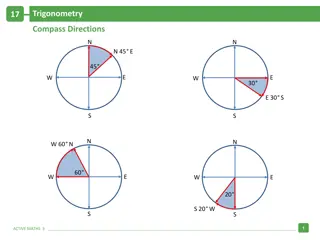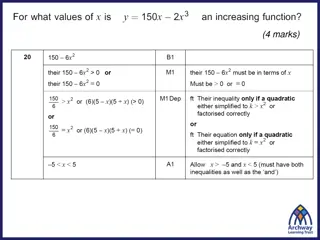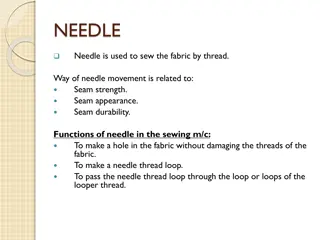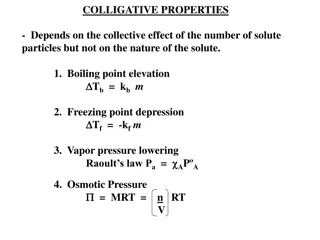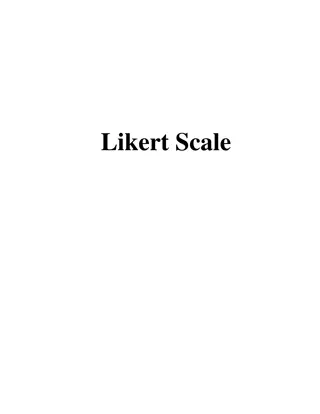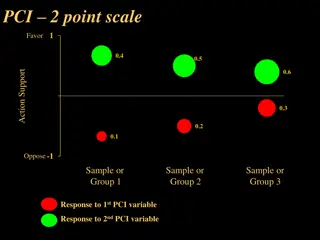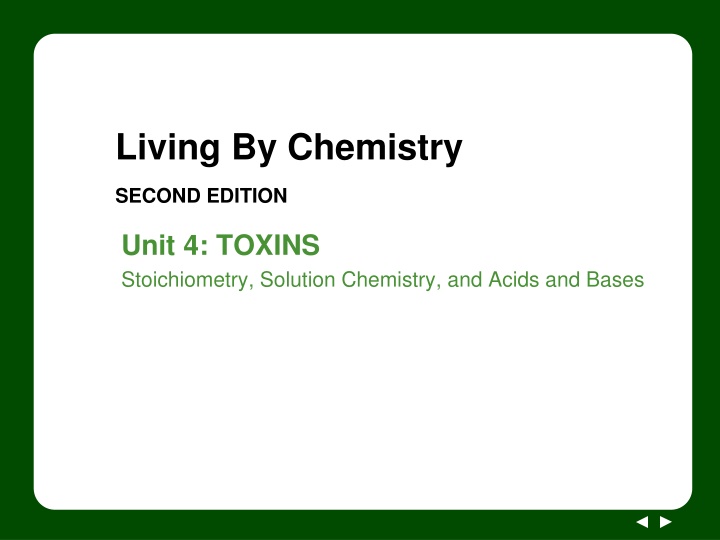
Toxins: Chemical Reactions and Harmful Substances
Explore the world of toxins and chemical reactions in Unit 4 of "Living By Chemistry". Learn how chemists track changes in matter, identify toxins, and understand their effects on living organisms through chemical equations.
Download Presentation

Please find below an Image/Link to download the presentation.
The content on the website is provided AS IS for your information and personal use only. It may not be sold, licensed, or shared on other websites without obtaining consent from the author. If you encounter any issues during the download, it is possible that the publisher has removed the file from their server.
You are allowed to download the files provided on this website for personal or commercial use, subject to the condition that they are used lawfully. All files are the property of their respective owners.
The content on the website is provided AS IS for your information and personal use only. It may not be sold, licensed, or shared on other websites without obtaining consent from the author.
E N D
Presentation Transcript
Living By Chemistry SECOND EDITION Unit 4: TOXINS Stoichiometry, Solution Chemistry, and Acids and Bases
In this unit you will learn: how toxins are defined how chemists determine toxicity the mechanisms by which toxic substances act in our bodies and what this has to do with chemical reactions
Lesson 68: Toxic Reactions Chemical Equations
ChemCatalyst 1. What toxins have you encountered in your life? 2. How can toxins enter the body? 3. How can toxins harm you?
Key Question How do chemists keep track of changes in matter?
You will be able to: complete basic translations of chemical equations give a basic definition of a toxin
Prepare for the Demonstration Work in pairs after the demo. HCl(aq) + NaHCO3(aq) NaCl(aq) + H2O(l) + CO2(g)
Discussion Notes HCl(aq) + NaHCO3(aq) NaCl(aq) + H2O(l) + CO2(g) The chemical equation represents a change in matter using symbols and formulas.
Discussion Notes (cont.) Toxins can enter the body in a limited number of ways. Toxins often react with water in the human body. Toxins may be molecular, ionic, or metallic substances.
Wrap Up How do chemists keep track of changes in matter? Chemical equations help chemists keep track of the substances involved in chemical changes. Chemical equations use chemical formulas to indicate the reactants and products of chemical changes. They also show what phase a compound is in. Toxins are substances that interact with living organisms and cause harm.
Check-In Consider this reaction between sodium cyanide and a solution of hydrochloric acid: NaCN(s) + HCl(aq) NaCl(aq) + HCN(g) a. Write an interpretation of the chemical equation. Sodium cyanide is highly toxic. What is the most likely way it will enter the body? b.






